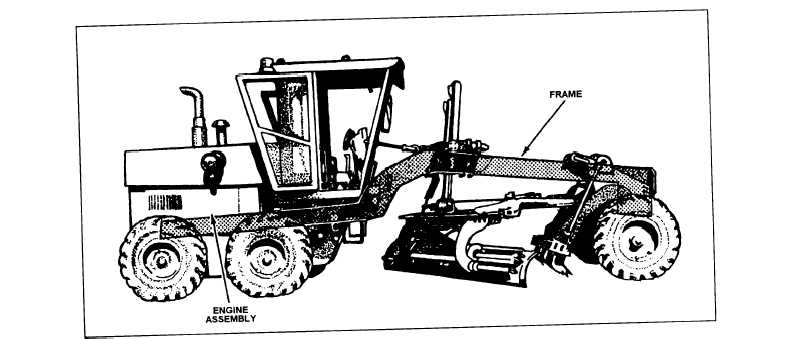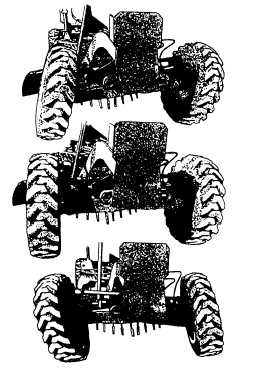Figure 10-4.-Grader frame.
Figure 10-5
.—Front axle.
engine with articulating controlled by a pair of hydraulic
cylinders. The articulated frame steering allows for an
increase in productivity and stability. The articulated
frame has a shorter turning radius than the conventional
grader (fig. 10-3). This allows for easier maneuvering
in close quarters and quick turnaround at the end of a
pass and enables the grader to carry a full blade of
material around a curve. Crab steering helps
compensate for side drift when turning a windrow, keeps
tandems on a firm footing when clearing ditches, and
increases stability on side slope work.
NOTE: Before articulating the grader, be aware of
the position of the grader blade. With the blade angled
in an acute position, articulating the grader sharply can
position the rear tires to run into the blade.
Frame
The frame connected to the front axle extends the
full length of the grader (fig. 10-4) and is high enough
to allow space for carrying and manipulating the grading
mechanism.
The front axle is compound. The lower section
carries the weight of the grader, oscillates on a center
pin, and is hinged to the bottom of the wheel spindle.
The upper section of the axle is hinged to the top of the
spindle, allowing the front wheels to lean as well as turn
(fig. 10-5).
Moldboard
The moldboard with the cutting edge and end bits
attached is called the blade. The blade is the working
10-3



